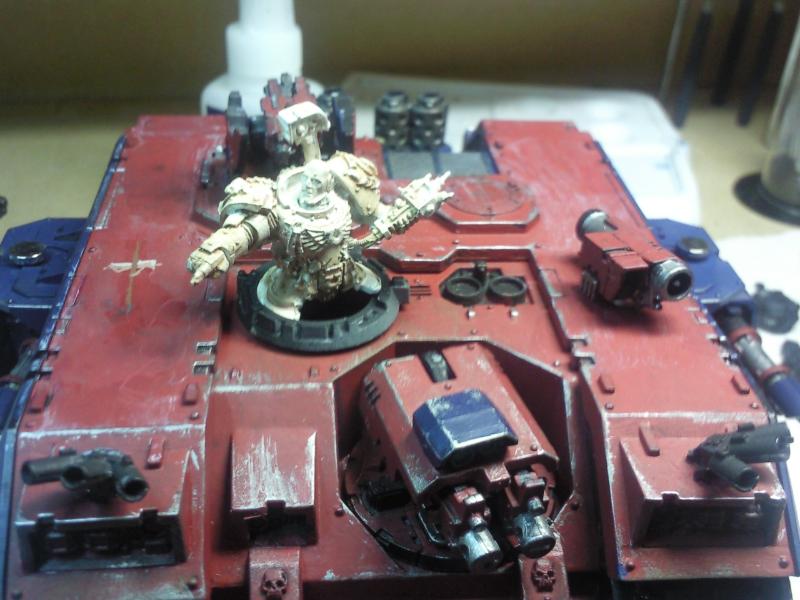 Currently, my list comprises:
Currently, my list comprises:2 HQs, a Reclusiarch and a Librarian.
20 Jumppack Assault Marines
10 without, in 2 Razorbacks.
10 Death Company with a Land Raider Redeemer
2 Storm Ravens
So Far, I've completed
- Both HQs, 4 Assault Marines and 4 Death Company.
I'm not too fazed about the armour; I have models (not blood angels, but otherwise correct) that are fitting for those roles. This is great, because I can run the army while I paint it, making painting a little more fun and fielding each model just a little more exciting. Garish jet black and bright red stops being so strong against the dull red/blue of my marines, and are starting to look more fitting.
So, as a rule, the only people Fearless (mad) enough to run with a Death Company are the Chaplains or Reclusiarchs of the Blood Angels / Blood Angels Successor Chapter. That said, even the best and brightest of the chapter live in eternal fear that one day they will fall to the formidable rage that is the death company. While some, Mephiston, Lemartes can overcome or control the blood thirst of their fate, many simply allow it to consume it.
 In this case, the Librarian running with the Death Company is not simply someone attached to the company, he is a part of the death company for all intents and purposes. (Of course, if the game needs him to go off alone, I'm sure he can control his rage for long enough to win me the game...)
In this case, the Librarian running with the Death Company is not simply someone attached to the company, he is a part of the death company for all intents and purposes. (Of course, if the game needs him to go off alone, I'm sure he can control his rage for long enough to win me the game...)What you'll notice immediately is a Board Shield from a Bretonnian Man At Arms model. You're thinking
"What the hell is that doing there?"Well, it's simple really: This is a Blood Angels Librarian. His Psychic Powers are Unleash Rage and Shield of Sanguinius.
Unleash Rage is easy to represent; he's a member of the death company. His rage is unleashed as a rule.
The Shield of Sanguinius power required more creativity to represent.
What you'll notice in the example to the left is that his hand is open and out, as if he was pushing the shield out with some form of telekinetic power.
Eh. I thought it was a nice touch.
Sword's done in my standard way, with bouncing electricity coming from the haft. I decided to add a green lightning strand as well because it's meant to be a forcesword. Otherwise, the model is a death company member with blue armour parts (the helmet, hands and the shoulder pads.) so that everyone knows he's a DC libby.
From the back
And a full view. He sits in the centre of my death company I think he's going to be a suitable centrepiece.
Oh, if you're wondering, the Sword is from a GK terminators kit. This is, effectively, so that no-one can complain about the model being "based on too large a base". (not that it should really matter - he's not going to get stuck into combat.)


















